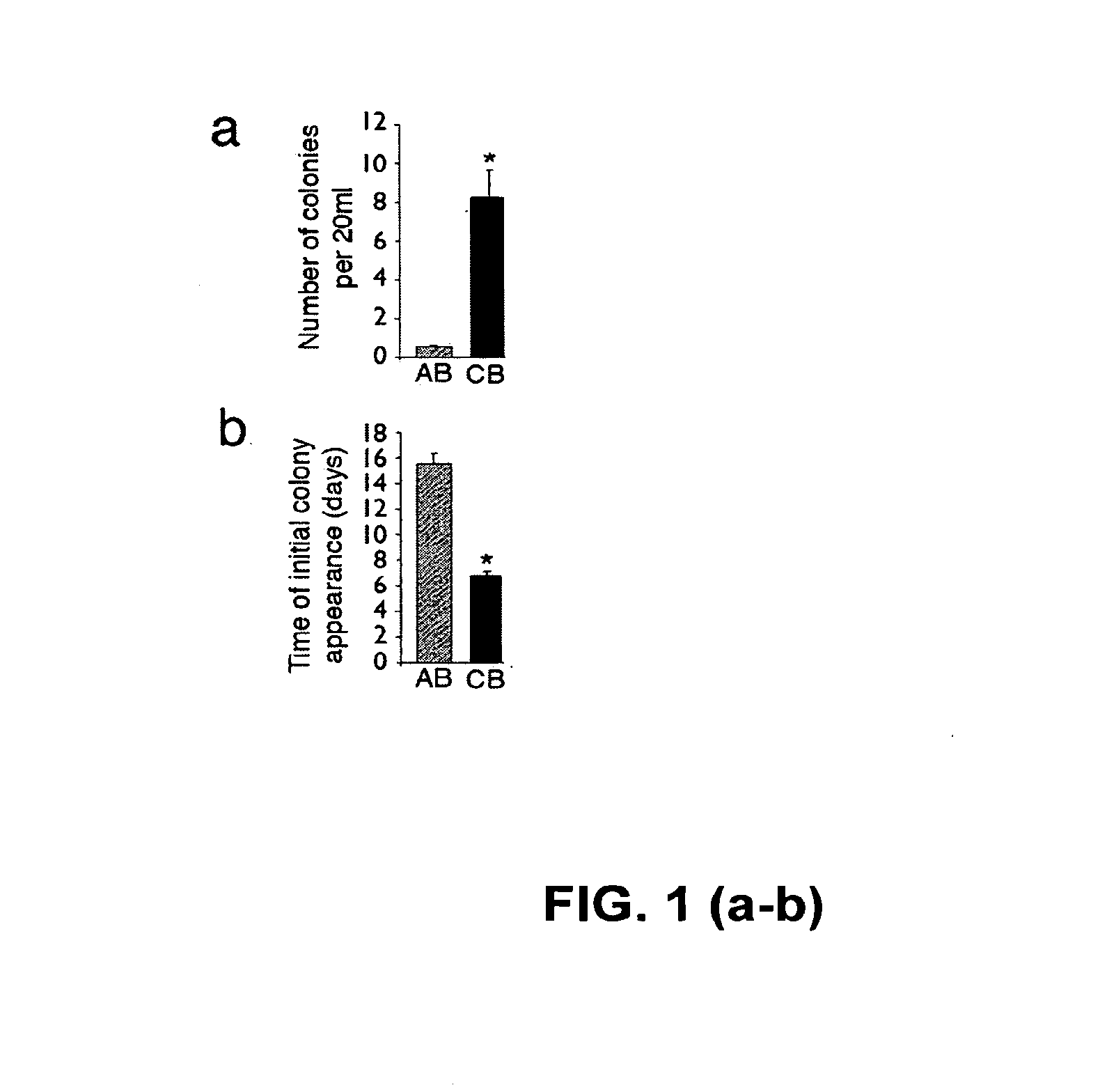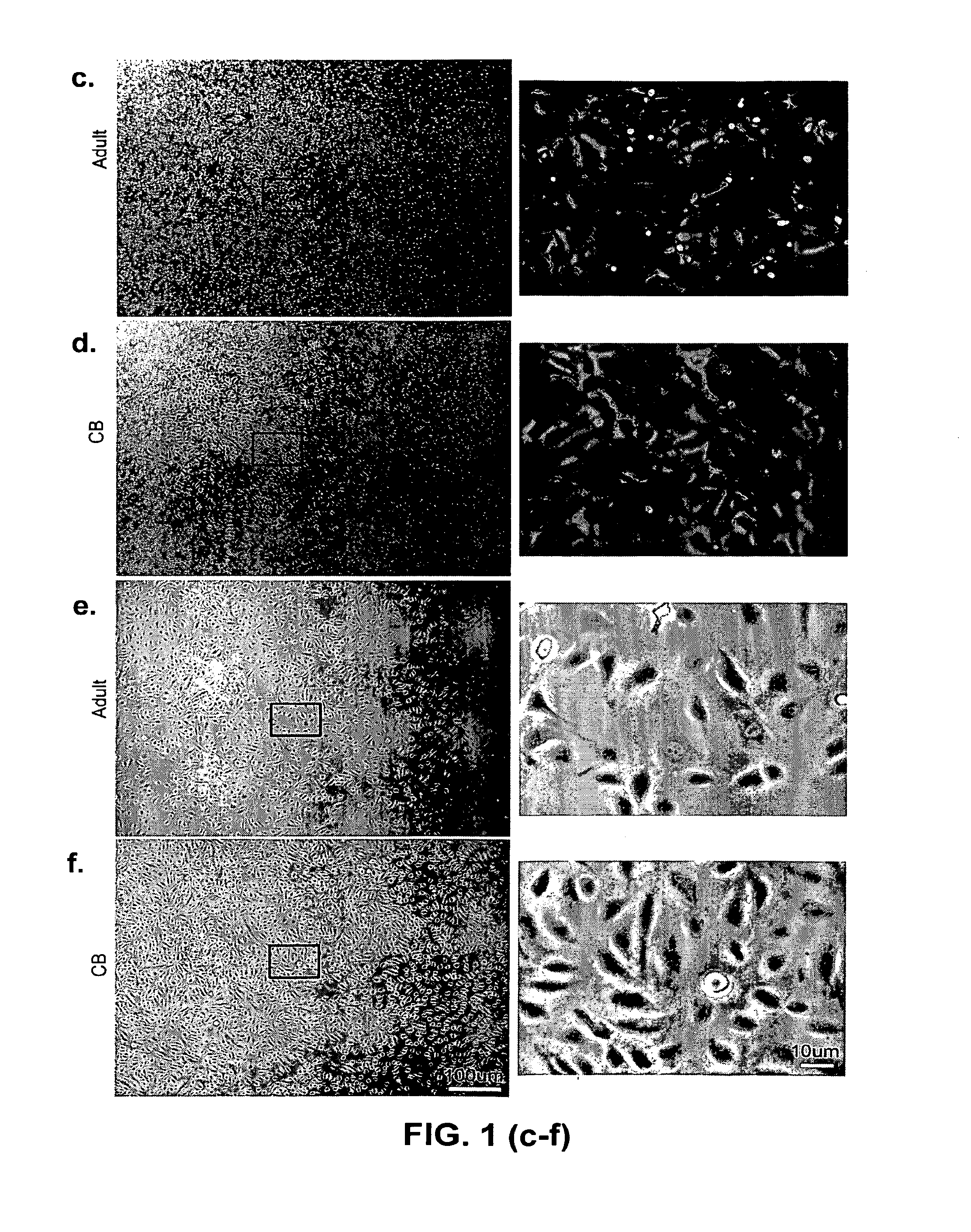Isolation, expansion and use of clonogenic endothelial progenitor cells
a technology of clonogenic endothelial cells and progenitor cells, which is applied in the field of clonogenic endothelial progenitor cells, can solve the problems of difficult interpretation of these studies, inability to guarantee the isolation and characterization of single endothelial cells, and inability to reproduce cell types suitable for clinical use, etc., to achieve high proliferative potential, increase hsc, and increase hsc repopulation activity
- Summary
- Abstract
- Description
- Claims
- Application Information
AI Technical Summary
Benefits of technology
Problems solved by technology
Method used
Image
Examples
Embodiment Construction
[0034]A new endothelial cell progenitor named a high proliferative potential endothelial colony forming cell (HPP-ECFC) displays high proliferative potential (up to 100 population doublings compared to 20-30 doublings in adult blood endothelial outgrowth cells, (EOCs>>. HPP-ECFC cells can be replated at a single cell level and the majority of cells proliferate with some regeneration of secondary HPP-ECFCs. In contrast, no other published endothelial progenitor cell displays growth after replating at a single cell level. Unexpectedly, there is a IS-fold higher frequency of HPP-ECFC colony formation in equivalent volumes of cord blood compared to adult peripheral blood EOC frequency (FIG. 1a, b, Table 1). Further, monolayers of cord blood derived HPP-ECFCs demonstrate a 2.5-fold decrease in population doubling times (PDT) and at least a 2-fold increase in cumulative population doubling levels (CPDL) compared to adult EOCs. In contrast to other populations of endothelial progenitor cel...
PUM
| Property | Measurement | Unit |
|---|---|---|
| diameters | aaaaa | aaaaa |
| size | aaaaa | aaaaa |
| cytoplasmic diameters | aaaaa | aaaaa |
Abstract
Description
Claims
Application Information
 Login to View More
Login to View More - R&D
- Intellectual Property
- Life Sciences
- Materials
- Tech Scout
- Unparalleled Data Quality
- Higher Quality Content
- 60% Fewer Hallucinations
Browse by: Latest US Patents, China's latest patents, Technical Efficacy Thesaurus, Application Domain, Technology Topic, Popular Technical Reports.
© 2025 PatSnap. All rights reserved.Legal|Privacy policy|Modern Slavery Act Transparency Statement|Sitemap|About US| Contact US: help@patsnap.com



